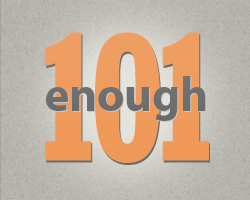
Editor’s Note: This post is a brief history, intended to provide a contextual background for understanding the complex issues that the Enough Project works on. It is part of the series Enough 101.
Acronyms to Know
ICU – Islamic Courts Union
TFG –Transitional Federal Government
AMISOM – African Union Mission in Somalia
Al-Shabaab is a Somali insurgent and terrorist group with the goal of creating an Islamic state in Somalia by ridding the country of foreigners and outside influences. Officially named the Harakat Shabaab al-Mujahidin, al-Shabaab started as a militant offshoot of the Islamic Courts Union, or ICU, that controlled most of Somalia from the late 1990s until 2006.
Sheikh Mohamed Mukhtar Abdirahman "Abu Zubeyr” is the group’s leader, though al-Shabaab is fractured, and it is thought that a core group leads its actions, divided into four independently operating geographical units.
Although the Somali government and Ethiopian forces routed the ICU in a two-week war between December 2006 and January 2007, al-Shabaab continued its violent insurgency in southern and central Somalia, much of which it still controls. Al-Shabaab uses a combination of guerilla, terrorism, and military tactics to intimidate local populations and fight against Somalia’s Transitional Federal Government, or TFG, and the African Union Mission in Somalia, or AMISOM, both of which al-Shabaab sees as western impositions. The group has targeted international aid workers, journalists, tourists, and U.N. employees in Somalia, Kenya, Uganda, and Ethiopia.
Al-Shabaab is made up of anywhere between 3,000 to around 14,000 fighters, many of whom were forcibly recruited. Most likely al-Shabaab has about three hundred to eight hundred hardcore ideological believers, bolstered by international recruitment efforts.
While most of its fighters are predominantly interested in the nationalistic battle against the TFG and not supportive of global jihad, al-Shabaab’s senior leadership claims to be affiliated with al-Qaeda.
On February 29, 2008, the U.S. government designated al-Shabaab as a Foreign Terrorist Organization and as a Specially Designated Global Terrorist.
By February 2009, al-Shabaab controlled most of southern Somalia, including the capital of Mogadishu, as depicted in this map.
In August 2011, al-Shabaab withdrew from Mogadishu and re-focused its activities against the TFG and international aid agencies to the regions of southern Somalia bordering Kenya. These activities included intimidating international aid groups and preventing the flow of humanitarian assistance to famine victims. In July and August 2011, thousands of Somalis fled to neighboring Kenya, even while al-Shabaab blocked their departure.
In September and October 2011, al-Shabaab affiliates kidnapped westerners in northern Kenya. In response to the kidnappings, a Kenyan government spokesperson announced that troops would be “pursuing al-Shabaab across the border.”
The Kenyan intervention in southern Somalia is ongoing. AMISOM peacekeepers continue pushing the front with al-Shabaab out from the Mogadishu city limits while contending with regular explosions coordinated by remnants of al-Shabaab on the streets of the capital. In a paper for the Enough Project, Somalia expert Ken Menkhaus recommended some crucial objectives for Somalia’s leaders, governments in the region, and international partners to pursue to give the current military operations the best shot at success. Read Menkhaus’ “After the Kenyan Intervention in Somalia” for full details.
For more information and to see the sources used in this post, check out the Enough Project's Somalia Pinterest Board.

